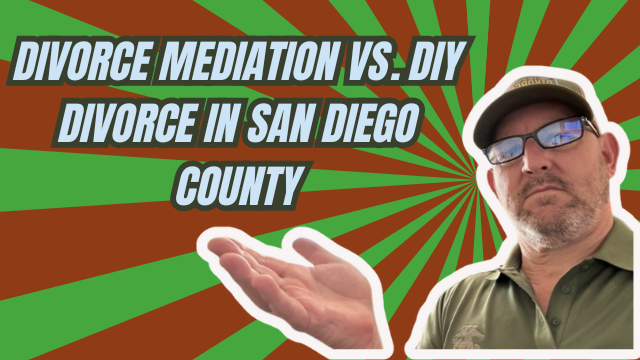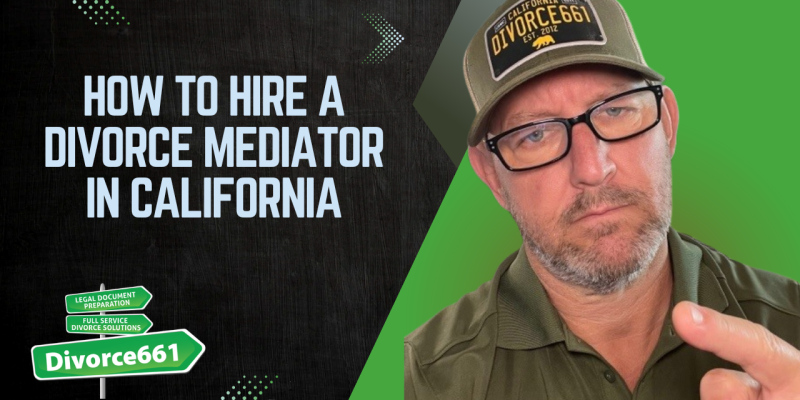Divorce Mediation vs. DIY Divorce in Alameda County: Which Path Makes Sense?
I’m Tim Blankenship from Divorce661. In a short video I created, I walk through the pros and cons of handling a divorce yourself (DIY) versus using mediation here in Alameda County. Both options can be cost-effective and amicable, but each has traps that can delay your case or leave your judgment incomplete if you don’t get the paperwork right.
Quick overview: DIY or mediation?
- DIY divorce can be the lowest-cost option if both parties already agree on everything and you correctly complete and file all required documents.
- Mediation brings a neutral third party to guide negotiations on property division, support, and custody—especially useful when you’re stuck on terms or need help reaching a fair agreement.
- No matter which route you choose, accurate court paperwork and proper e-filing are essential to finalize your divorce in Alameda County.
What DIY divorce involves — and where people go wrong
DIY means you and your spouse prepare, sign, and file all the necessary documents yourselves. It’s a reasonable option for straightforward, uncontested divorces.
That said, DIY is not as simple as filling out a form and dropping it into the system. Alameda County uses an e-filing system that requires precise formatting and correct procedural steps.
Common DIY pitfalls
- Filing the wrong forms or missing required attachments.
- Incorrectly completed forms that the court rejects.
- Failing to follow e-filing rules or deadlines, causing delays.
- Overlooking crucial disclosures or financial statements.
- Informal agreements that are not converted into enforceable judgments.
“One wrong move and your documents might be rejected.”
That rejection can translate into weeks or months of delay, additional expense, and the risk that an agreement is not properly memorialized in a final judgment.
Understanding Alameda County e-filing
E-filing is convenient but exacting. Alameda County’s systems expect specific document names, formats, and supporting documents. If you’re unfamiliar with local court rules, e-filing becomes a stumbling block rather than a shortcut.
Key things to keep in mind:
- Know which forms the court requires for your situation (financial disclosures, marital settlement agreements, judgment forms).
- Follow Alameda County’s e-filing formatting and submission rules to avoid rejections.
- Keep records of all filings and confirmations so you can prove timely submission if needed.
How mediation works and why it helps
Mediation brings a neutral mediator to help both parties discuss and resolve issues—property division, spousal support, child custody, and visitation. The mediator doesn’t decide for you; they facilitate solutions that both sides can accept.
When mediation makes sense
- You and your spouse are willing to communicate but need guidance to reach fair terms.
- There are disagreements about asset division, support, or parenting but no history of abuse or coercion.
- You want to avoid costly litigation and preserve a cooperative relationship post-divorce.
Mediation can be used for complex or simple cases alike. Even seemingly straightforward divorces benefit from a mediator’s expertise to ensure agreements are fair, clear, and complete.
Real client story: When DIY stalled, mediation finished the job
Here’s a real example from Alameda: a couple attempted a DIY divorce but hit a roadblock over a few property division terms. They could not agree and feared their DIY process would fail.
We referred them to a trusted mediator. With skilled facilitation, they reached a mutually acceptable agreement. After that, Divorce661 handled the paperwork and e-filing, and their divorce was finalized without a court appearance.
The takeaway: mediation helped them navigate the tough issues, and proper document preparation and filing closed the case quickly.
How Divorce661 supports both paths
At Divorce661 we provide options tailored to where you are in the process:
- If you’re already in agreement: we prepare your paperwork, complete disclosures, and e-file everything correctly with Alameda County.
- If you’re struggling to agree: our mediators guide negotiations and help produce an enforceable settlement.
- Flat-fee services with no hidden costs, and remote support across Alameda County keeps the process efficient and affordable.
What we handle
- Form preparation and review
- Financial disclosures and settlement documents
- E-filing with the Alameda County court system
- Final judgments and confirmation of case closure
Choosing the right path for your divorce
Ask yourself these questions to decide:
- Do we already agree on the material terms (assets, support, custody)? If yes, DIY with professional document support may work.
- Are there unresolved disputes that neither of us can settle alone? Mediation can help reach a fair solution.
- Do we want to avoid court, save money, and move forward respectfully? Both approaches aim for that—mediation increases the chance of a durable agreement.
Conclusion — Make the process smooth and final
A smooth divorce in Alameda County is possible with the right approach. DIY can work for couples in full agreement, but mistakes in e-filing or paperwork can be costly. Mediation offers a balanced way to resolve disputes and often speeds resolution. Either way, proper document preparation and e-filing are critical to make your divorce final and enforceable.
If you’re unsure which path is right, we offer a free consultation to help you decide and to explain how we can support your case—whether that’s handling paperwork or guiding mediation.
Visit divorce661.com for a free consultation and to learn more about our flat-fee, remote services across Alameda County.










